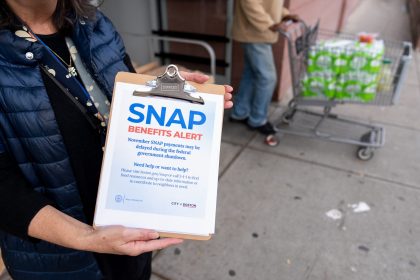Shock. Anger. Shame. And finally, hopelessness. The emotions that follow a car repossession can be overwhelming, but they often converge into one lingering question: “What do I do now?”
As an insurance agent in 2009, I received this call more times than I can count, as the Great Recession resulted in 3.45 million vehicle repossessions over the course of two years. Drivers suddenly faced the loss of their transportation – and also their sense of stability.
Immediate concerns often centered on survival — how to get to work, pay the bills and take care of their families. In the months that followed, concerns shifted to the new financial tangles policyholders experienced post-repossession, from a license suspension due to an insurance lapse to inquiries about unexpected tax bills for cars taken the year before.
Now, the same questions are resurfacing as repossessions climb again. Data from Cox Automotive shows repossessions increasing by 43% between 2022 and 2024. An estimated 3.22 million vehicles were repo’d through 2023 and 2024, compared to 2.43 million from 2020 and 2021. Rahkim Sabree, a financial therapist and consultant, believes 2025 might not fare any better when the year is done.
“Repossession, eviction and even bankruptcy are all likely responses to the current economic strain of today’s economy,” says Sabree. “With inflation, wage stagnation, AI adoption, and mass layoffs, people will do what they have to in order to relieve the pressure.”
Aside from external factors influencing the rise of repossessions, the cost of owning a car has been creeping up for years. “Record-high vehicle prices and elevated costs for maintenance, repairs and insurance have really stacked up,” says Ted Rossman, Bankrate’s senior industry analyst. “As a result, auto loan delinquencies are at their highest level since 2010, according to the New York Fed. The situation is particularly bad among borrowers with lower credit scores — Fitch says the subprime auto delinquency rate is the highest since at least 1994.”
If your car has been repossessed, you might not have the funds available for redemption (that is, paying the past due balance plus fees to buy back your vehicle). But how you handle the aftermath can help you limit some of the financial fallout. Here’s what to do next — financially, emotionally and practically — if your car has been repossessed.
Step one: Don’t panic after a repossession — gain clarity and stabilize
It’s common to freeze or shut down when your car disappears, but taking action quickly helps you regain control. In most states, the lender isn’t required to notify you before seizing your vehicle. Repo laws vary by state, and while many banks wait for 90-120 days of delinquency, some move within 30 days. This can leave drivers panicked, wondering if their car was stolen or towed.
Start by calling your lender or loan servicer to confirm whether your vehicle was repossessed and where it’s being held. Once you know what happened and where your car is, you can begin to steady yourself and plan your next steps.
Then, focus on your immediate needs. Do you have a way to get your kids to and from school for the next few days? Can you arrange a ride to work or get access to public transportation? Putting short-term solutions in place helps protect your job, your family’s routine and your peace of mind.
Navigating grief, shame, the fear of the unknown, etc. can be a significant mental and emotional hurdle. Recognizing or establishing safety immediately afterwards should be the number one priority.
— Rahkim Sabree, AFC and author of “Overcoming Financial Trauma”
Step two: Contact your insurance agent
Your next call should be to your insurance agent or company. Let them know your car was repossessed and ask what steps you should take based on your policy and your state’s requirements. This confirmation is more than a formality. What you do next can affect your current policy and future insurance rates.
In some states, you can remove the car from your policy right away, without any documentation. If you have a two-car policy, remember that removing a vehicle also removes the multi-car discount, increasing the cost of insuring the remaining car. Ask if you’re entitled to a refund for any unused premium, how much it will be and when or how you’ll receive it.
If you’re required to maintain an SR-22 filing to keep your license active, then canceling your insurance policy isn’t the best option. Instead, ask your carrier for a quote on a non-owner insurance policy, which provides liability protection for cars you may rent or borrow and meets the state’s requirement at a cheaper rate than a typical full coverage policy.
This type of policy can also help you avoid a common rate increase that occurs between losing your vehicle and buying another one. Bankrate’s True Cost of Car Insurance study shows that drivers who let their insurance lapse typically pay about $251 more per year once they start a new policy. It may be worth maintaining continuous coverage if you have an idea of when you might have another vehicle.
Step three: Handle plates and taxes after an auto repossession
One of the most overlooked steps after an auto repossession is properly handling license plate and tax requirements. Ten states require drivers to surrender their license plates to the Department of Motor Vehicles before canceling their car insurance. Skipping this step signals to the state that you are driving uninsured and can result in costly fines and a possible license suspension. For example, New York state charges $8-12 per day until the plates are returned.
States that require plate surrenders include:
- Florida
- Georgia
- Kentucky
- Louisiana
- Mississippi
- Nebraska
- New Jersey
- New Mexico
- New York
- Pennsylvania
About half of the states in the country assess annual vehicle property taxes. Even if your car has been repossessed and you’re no longer the owner, the tax obligation stays in your name. You must take the extra step to contact your county treasurer or tax department to remove the vehicle from your record. Failing to do so could mean receiving a tax bill for a car you haven’t owned in months.
Step four: Rebuild and reinsure after repossession
Moving forward after a repossession can feel daunting, financially and emotionally. “We are often socialized to equate our value as a human being with the value we can provide through earning and spending money,” says Sabree. “Separating financial hardship from personal failure is difficult, but necessary.”
According to Sabree, making the mental shift from survival mode to future planning is critical. “Starting with small but consistent money wins and approaching financial decision making through the lens of rebuilding rather than stability can make a huge difference in both motivation and enthusiasm,” he says.
Working with a certified credit counselor can be a powerful step, as they can help you assess your full financial picture and create a realistic plan to improve your situation over time.
Individuals may feel tempted to jump back into old routines or to rush into reestablishing an old cadence when, mentally and financially, they may not match up. It’s ok to take it slow and be intentional while rebuilding.
— Rahkim Sabree
AFC and author of “Overcoming Financial Trauma”
When you’re ready for another vehicle, remember that affordability goes beyond the monthly payment. Bankrate’s Hidden Cost of Car Ownership study found that Americans spend an average of $575 per month on hidden ownership expenses, and this is before taking loan payments into account. Car insurance, gas, taxes, maintenance and repairs add up and fluctuate over the car’s lifespan, while sudden spikes in insurance rates and vehicle repairs can put strain on your budget.
The average cost of car insurance is $2,671 per year, or $223 per month, as of September 2025. However, drivers whose credit scores have taken a hit often pay more. Drivers with poor credit pay an average of $4,745 per year for full coverage insurance, $1,798 more than drivers with average credit. Before committing to your next car, research several makes and models and get insurance quotes for each one. Comparing coverage costs upfront can help you avoid unexpected expenses later on.
A car repossession can feel like the end of the road, but it’s really a turning point. How you handle the days and weeks that follow can shape your financial recovery for years to come. By taking quick action, keeping your insurance in order and addressing credit and tax issues early on, you can steady your footing and start rebuilding with confidence.
Why we ask for feedback
Your feedback helps us improve our content and services. It takes less than a minute to
complete.
Your responses are anonymous and will only be used for improving our website.
Help us improve our content
Read the full article here
















